Laminate countertops are popular for kitchens and bathrooms due to their affordability, wide range of designs, and ease of maintenance. While laminate is durable, it is not immune to damage such as scratches, chips, or even burns.
Fear not; just because your laminate countertop has suffered a minor setback doesn’t necessarily mean you need a full replacement. With a little patience and some practical know-how, you can repair most surface damage, restoring the sleek appeal of your countertop.
Here are some practical and effortless tips for repairing your laminate countertops. Here are some practical tips for effortlessly repairing your laminate countertops and keeping them looking their best.
#1: Assess The Countertop Damage.
Assessing the damage to your laminate countertop is pivotal before you embark on any repair procedure. This requires a close and careful examination of the countertop’s surface to identify any visible signs of wear or tear. The damage might be a minor scratch, a considerable chip, or a more severe burn.
It’s crucial to take note of the exact nature of the damage because each type has its appropriate repair technique. The damage’s severity and size will influence the repair process and the materials you’ll need for a successful restoration. This initial evaluation helps to ensure an efficient, effective repair and is essential for maintaining the longevity and aesthetics of your laminate countertop.
#2: Basic countertop repair and Maintenance
Regular cleaning and maintenance can help your laminate countertop stay pristine for years.
- Regular Cleaning: Using a soft cloth and a mild detergent is crucial, as harsh chemicals can damage the laminate’s finish. This routine keeps your counters looking fresh and prevents the build-up of residues that can lead to staining, ensuring that minor damages don’t escalate into more significant issues.
- Clean them regularly with a soft cloth and mild detergent to avoid leaving behind residues that can trigger minor damage.
- Avoid setting hot pots or pans directly on them, as the heat can cause discoloration or burn marks.
- Use a cutting board instead of slicing directly on the countertop to prevent scratches.
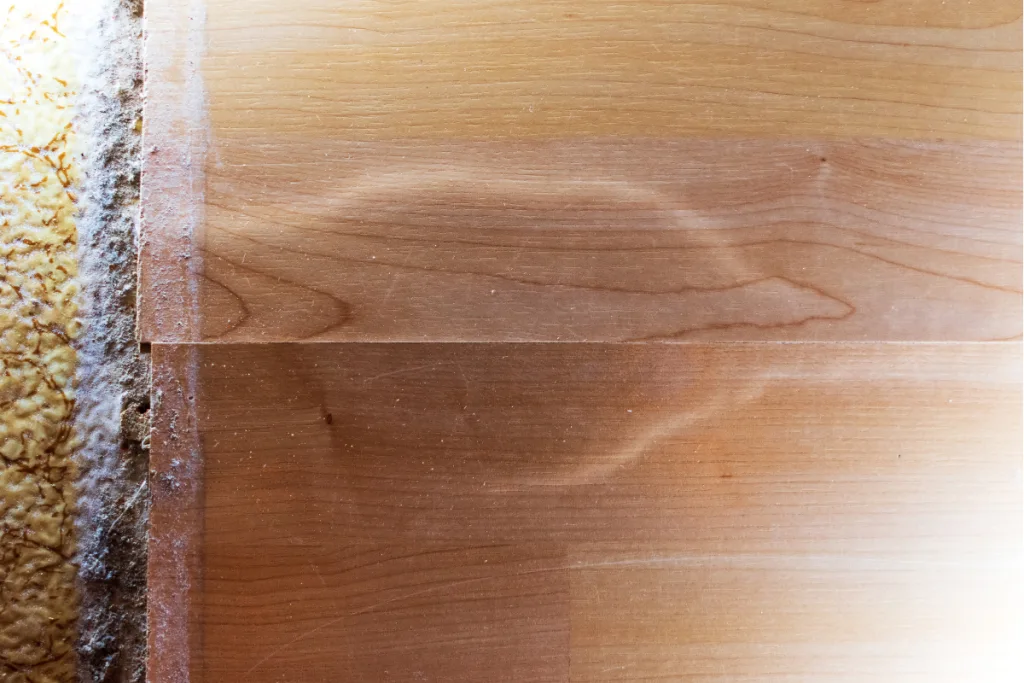
#3: Countertop Repair: Handling Scratches and Chips
Maintaining the pristine condition of your laminate countertops does not require extensive knowledge in home improvement or costly professional help. With routine care and some DIY savvy, you can keep your counters looking like new for years to come. Here’s how you can tackle basic laminate repair and maintenance:
- Heat Protection: While durable, laminate counters are not immune to the heat damage that can result from hot pots and pans being set directly upon them. The heat can cause discoloration or even burn marks, compromising the appearance and integrity of the countertop. A simple yet effective solution is to always use trivets or heat-resistant mats, an essential practice in laminate countertop care.
- Scratch Prevention: A common threat to the beauty of your laminate countertop is scratches, which can occur from day-to-day activities such as slicing and chopping. The remedy is as straightforward as implementing the use of a cutting board. This not only prevents scratches but also helps in maintaining the finish of your laminate, keeping sharp objects directly off the surface and ensuring a longer lifespan for your counters.
- Battling Chips And Stains: Despite your best efforts, your countertop might occasionally sustain chips or stains. A laminate repair paste or filler can be a quick fix for chips. Choose a product that closely matches the material of your counter, color and follow the application instructions carefully for a seamless repair. Stains can often be tackled with a paste made from baking soda and water, applied gently with a soft cloth.
- Edge And Epoxy Repairs: The edges of laminate countertops are particularly prone to wear and tear. Repairing these involves carefully reapplying adhesive to any loose edges or using a color-matched laminate repair paste for any chips or damage. An epoxy filler can be a more durable solution for deeper scratches or chips. When using epoxy, ensure it’s specifically designed for laminate and follow the directions for mixing and applying it to achieve a smooth, seamless finish.
#4: Addressing Burn Marks On A Laminate Countertop
While challenging, burn marks on your laminate countertops do not always cause despair. With a careful approach, you can address both minor and severe burns, restoring the appearance of your surfaces. When you notice a minor burn mark, act swiftly but gently:
- Mix baking soda with water to create a paste with a toothpaste-like consistency.
- Using a soft cloth, rub the paste onto the burn mark in a circular motion.
- Rinse thoroughly with water and dry with a soft towel.
For deep burns that baking soda can’t address, a more intensive approach is needed:
- Carefully measure and cut out the burned area using a utility knife or a router, making sure to keep the lines as straight as possible.
- Find a replacement piece of laminate that matches your countertop.
- Use contact cement to affix the new laminate piece firmly in place.
- Smooth out any air bubbles and ensure the edges are sealed.
#5: Fixing Peeling Laminate
Over time, your laminate countertops may begin to peel due to usage or exposure to moisture. However, you can easily reattach the laminate, thereby restoring the countertop’s appearance and prolonging its utility.
Step 1: Applying Wood Glue:
A syringe carefully injects quality wood glue underneath the peeled laminate. The glue must be spread evenly to ensure a flat and smooth finish once the laminate is pressed down.
Step 2: Securing The Laminate
After applying the glue, press down firmly on the peeling area, ensuring good contact between the laminate and the underlying surface. Carefully wipe off any excess glue immediately to prevent it from drying on the surface and leaving unsightly marks.
Step 3: Using Clamps
Finally, clamps must be applied along the edges of the re-glued area to ensure that the laminate adheres properly. Leave the clamps in place until the glue has completely dried. Follow the instructions provided on the glue packaging for recommended drying times.

#6: Consult A Professional
It might be more cost-effective and time-efficient to consult with a repair specialist for extensive damages and repairs. They bring years of experience and know-how, helping you restore your countertop to its original condition and ensuring a lasting and satisfying result.
Even though it’s tempting to ignore minor damage to your laminate countertops, addressing these issues promptly can prevent further deterioration and prolong the life of your countertops. After all, an ounce of prevention is worth a pound of cure!
Even though laminate countertops are resilient, accidents happen. Fortunately, with the right materials and a bit of patience, you can repair most minor damage to your countertops by yourself, restoring their appearance and extending their lifespan.
If the damage is too extensive, seeking professional help may be the best way to ensure your countertop looks its best. Consider these practical tips, and your laminate countertops should continue looking great for years to come.

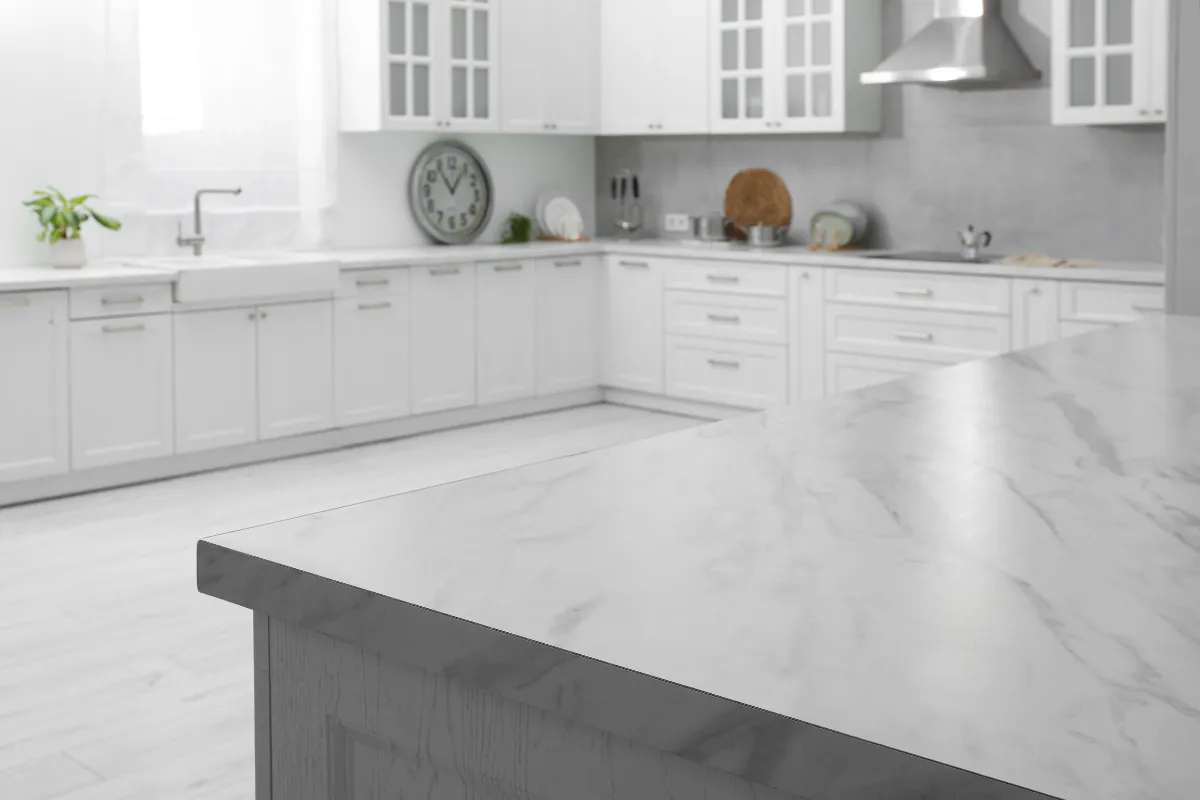
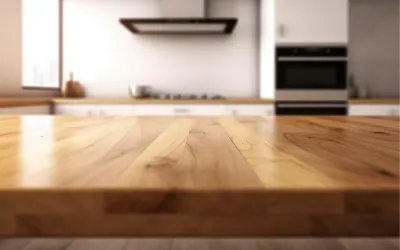
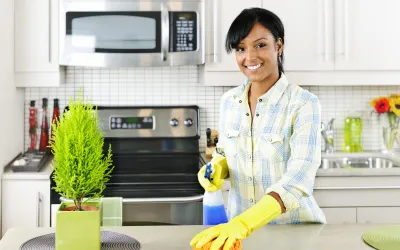
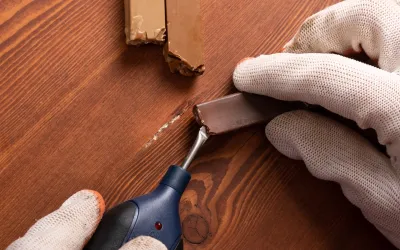
0 Comments